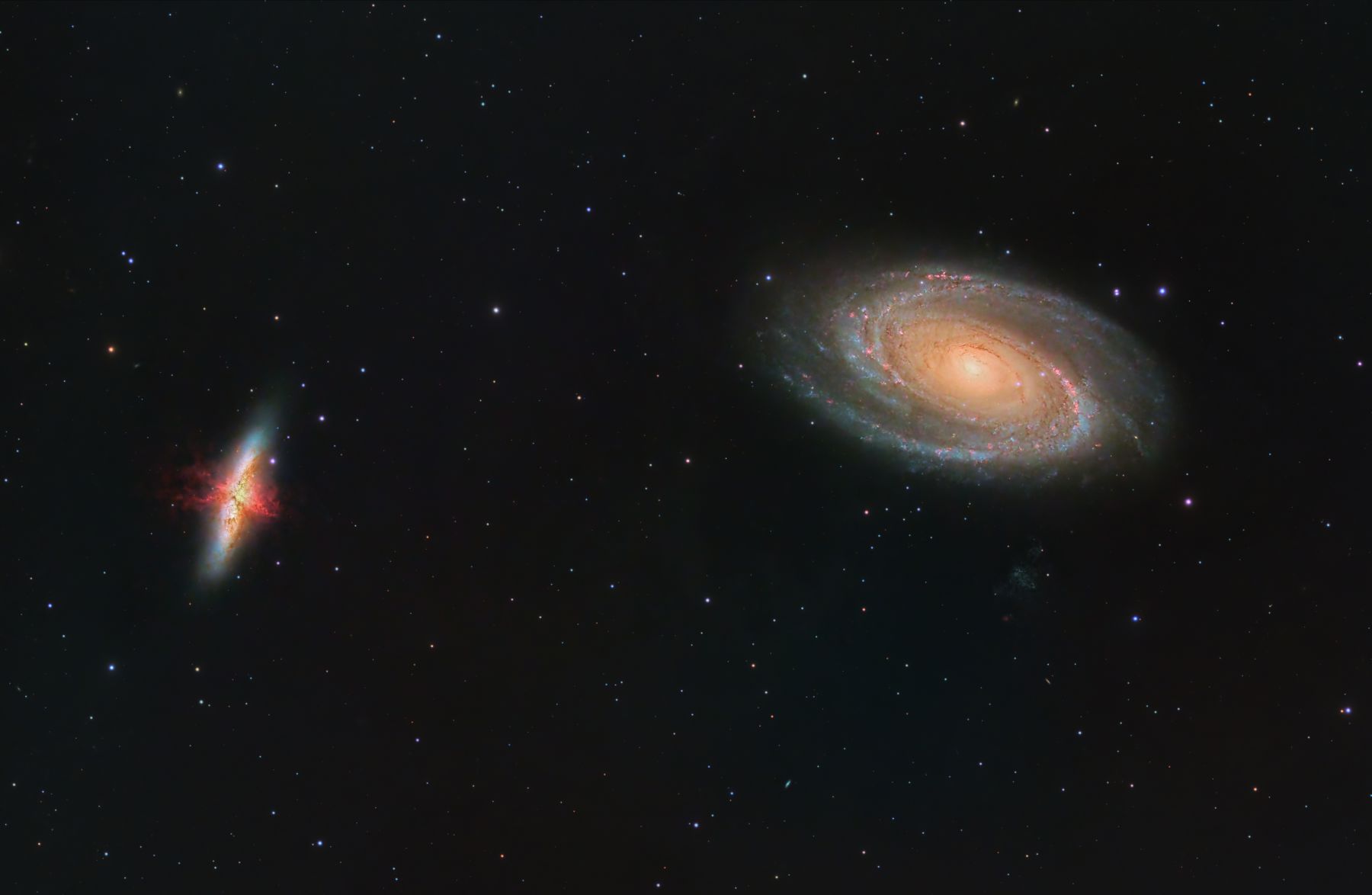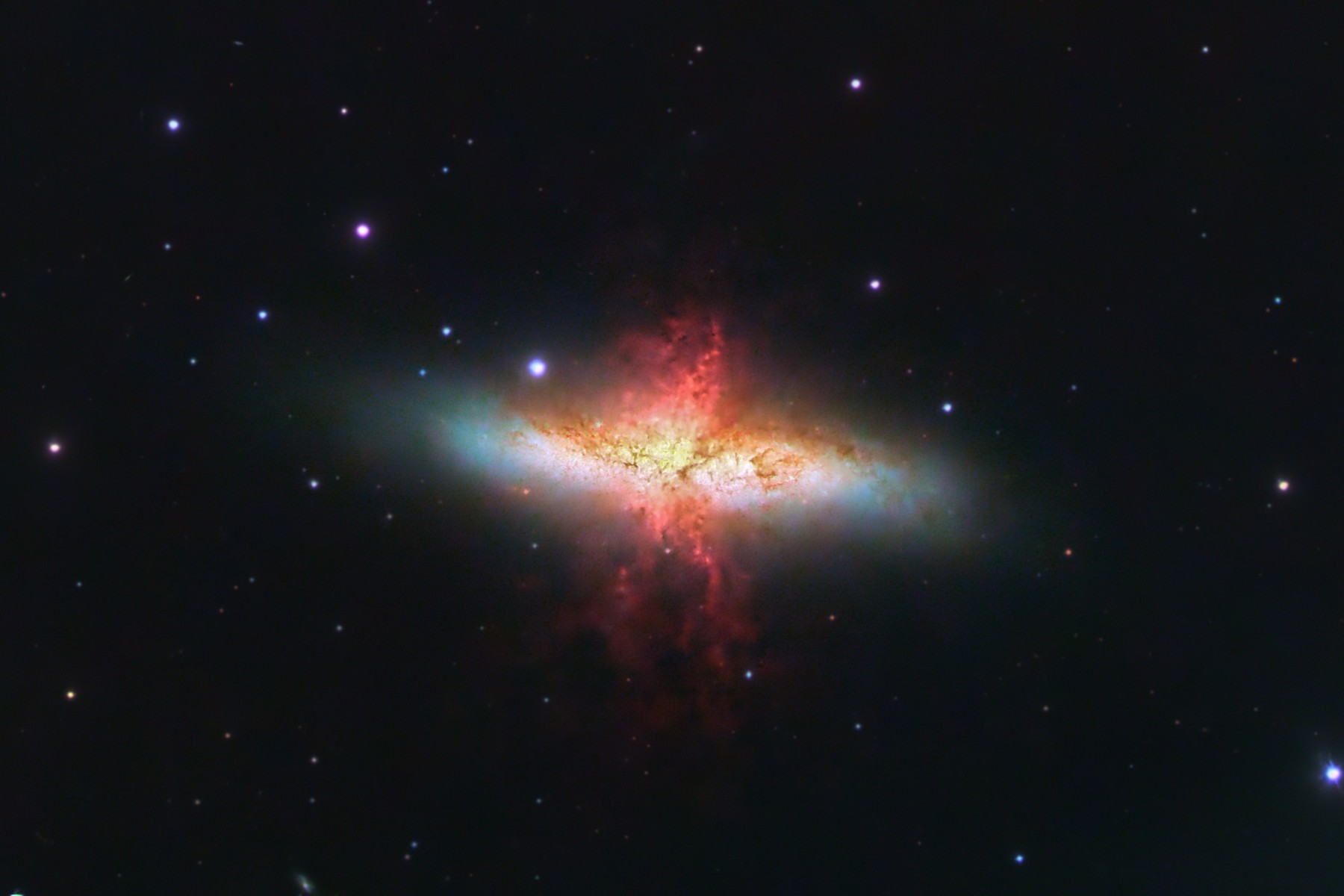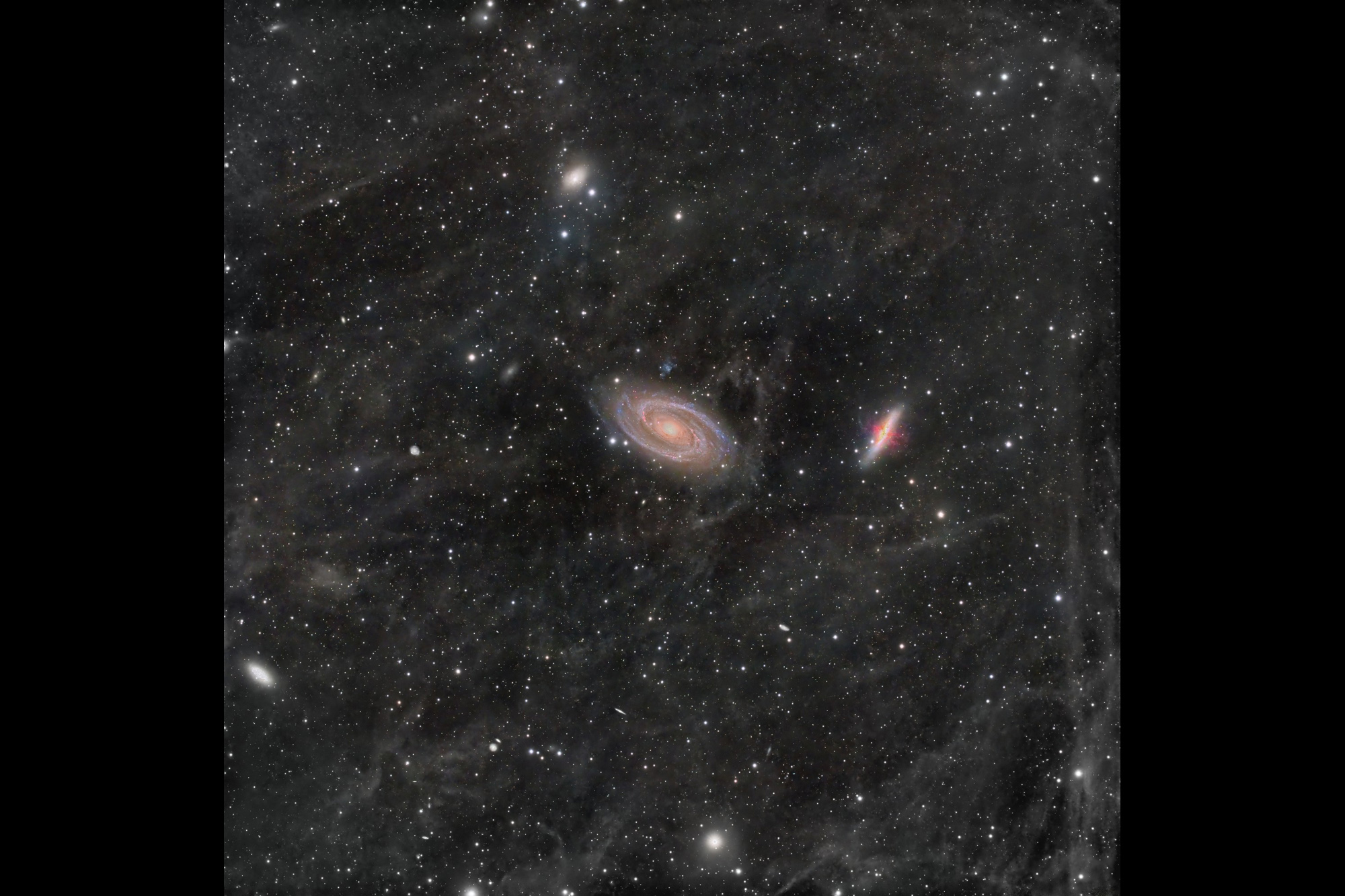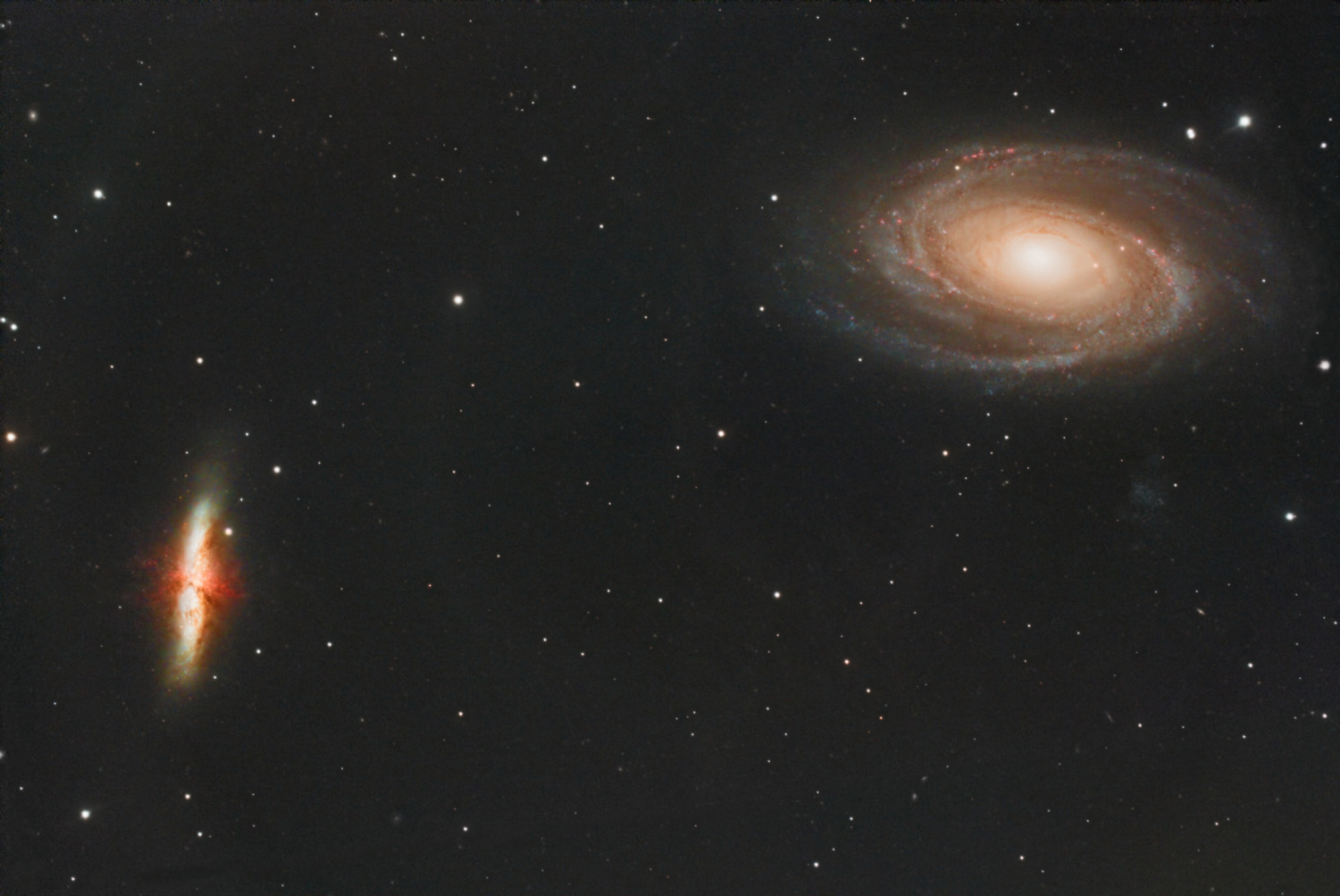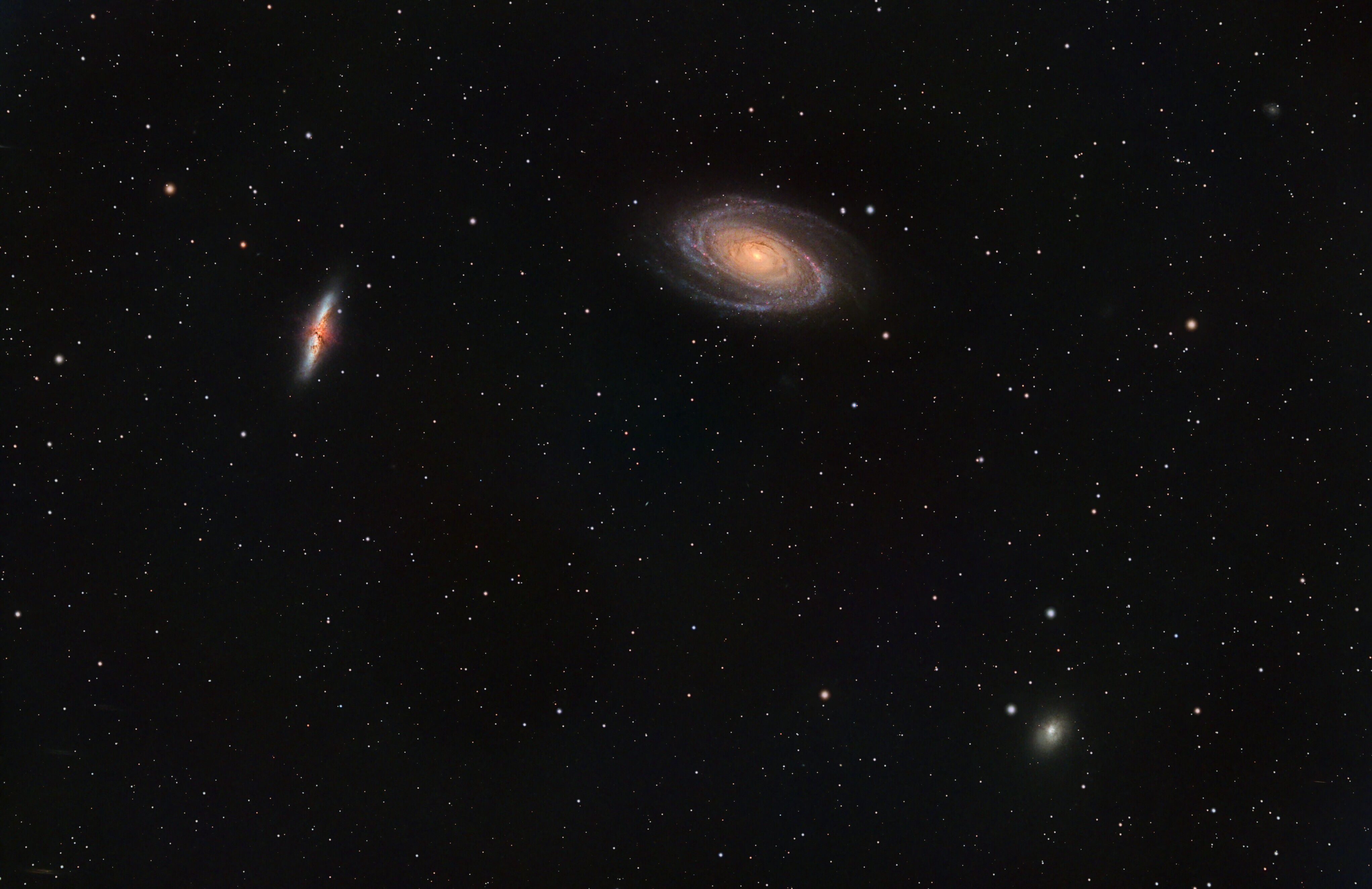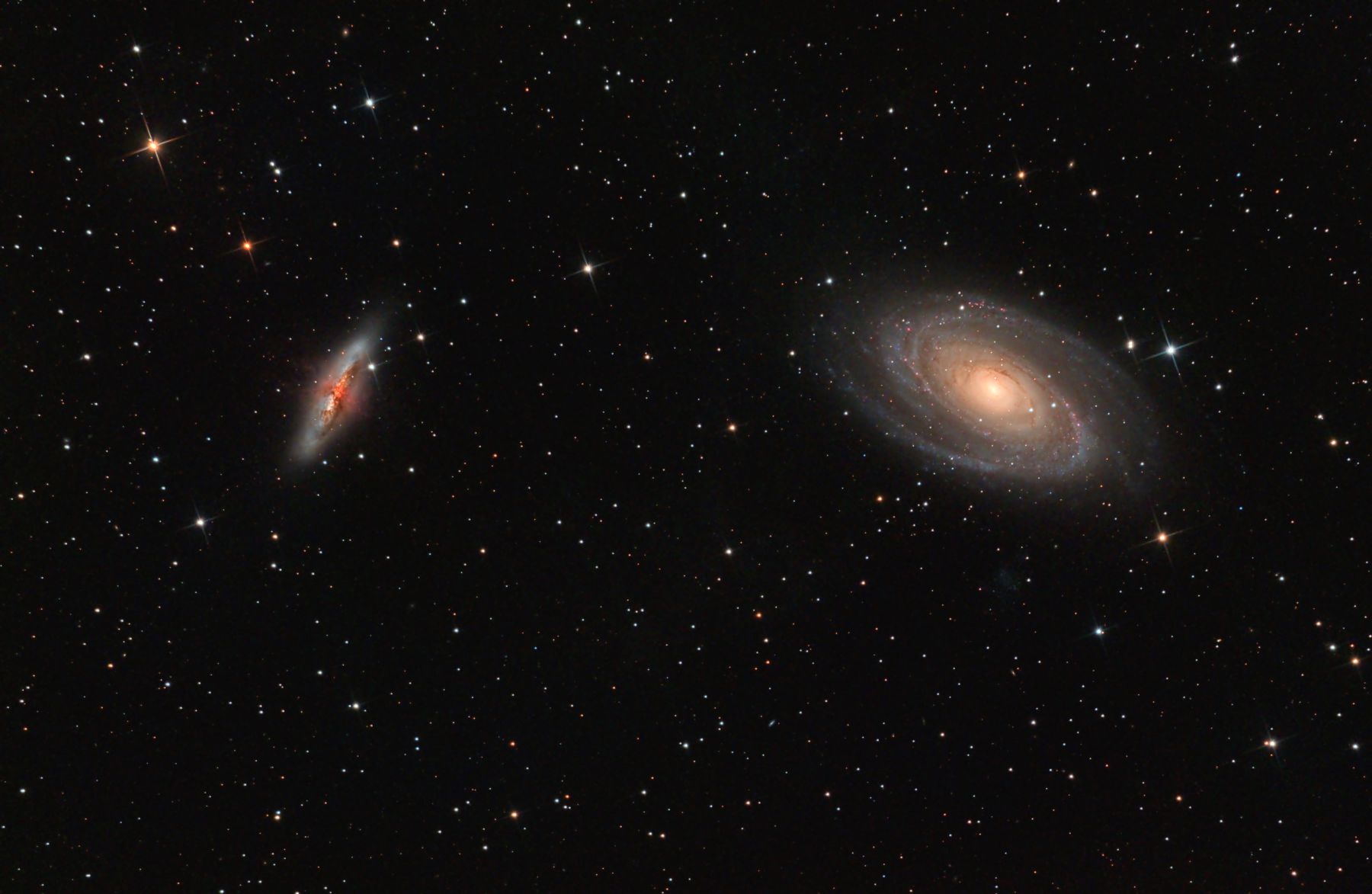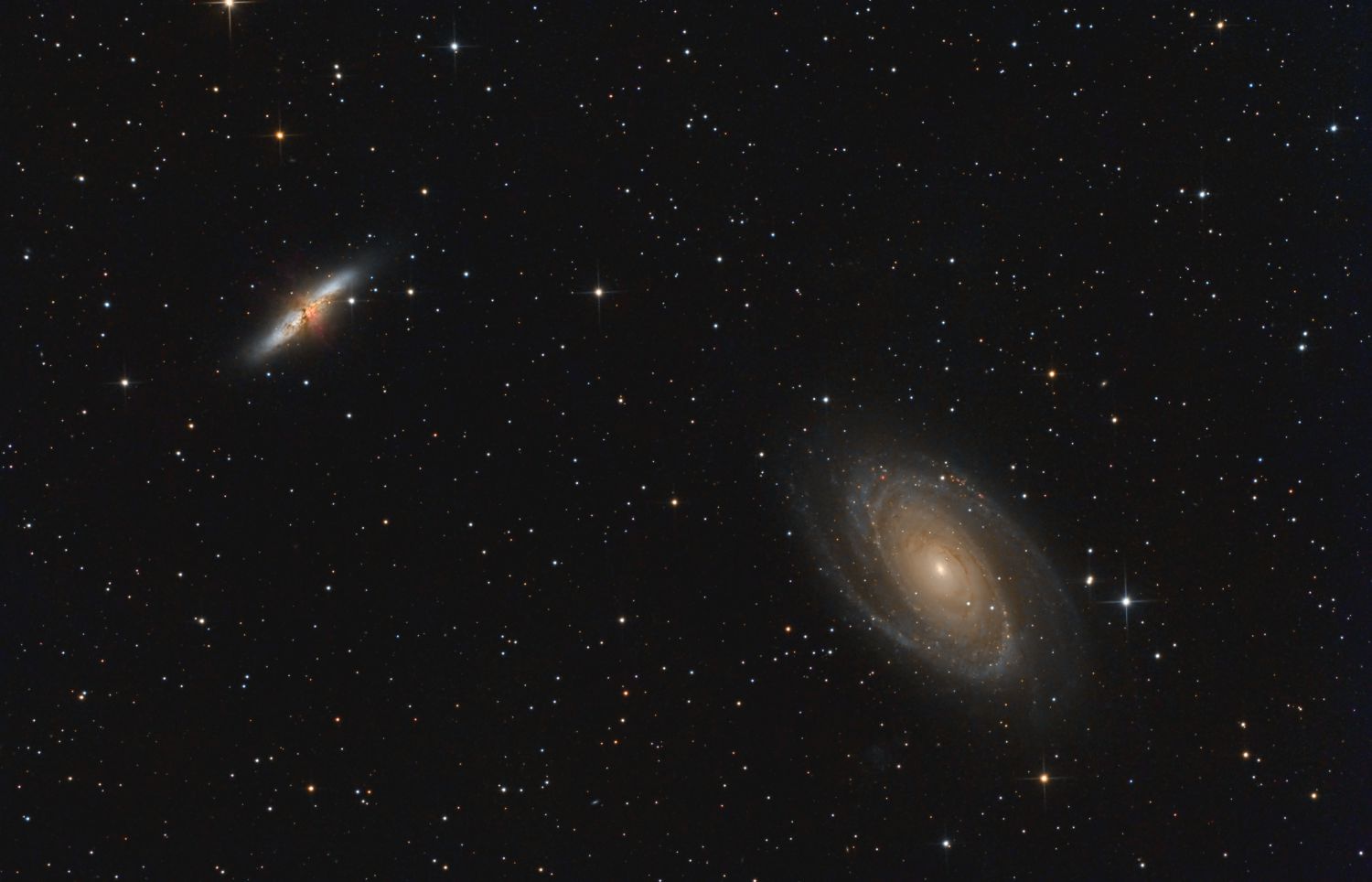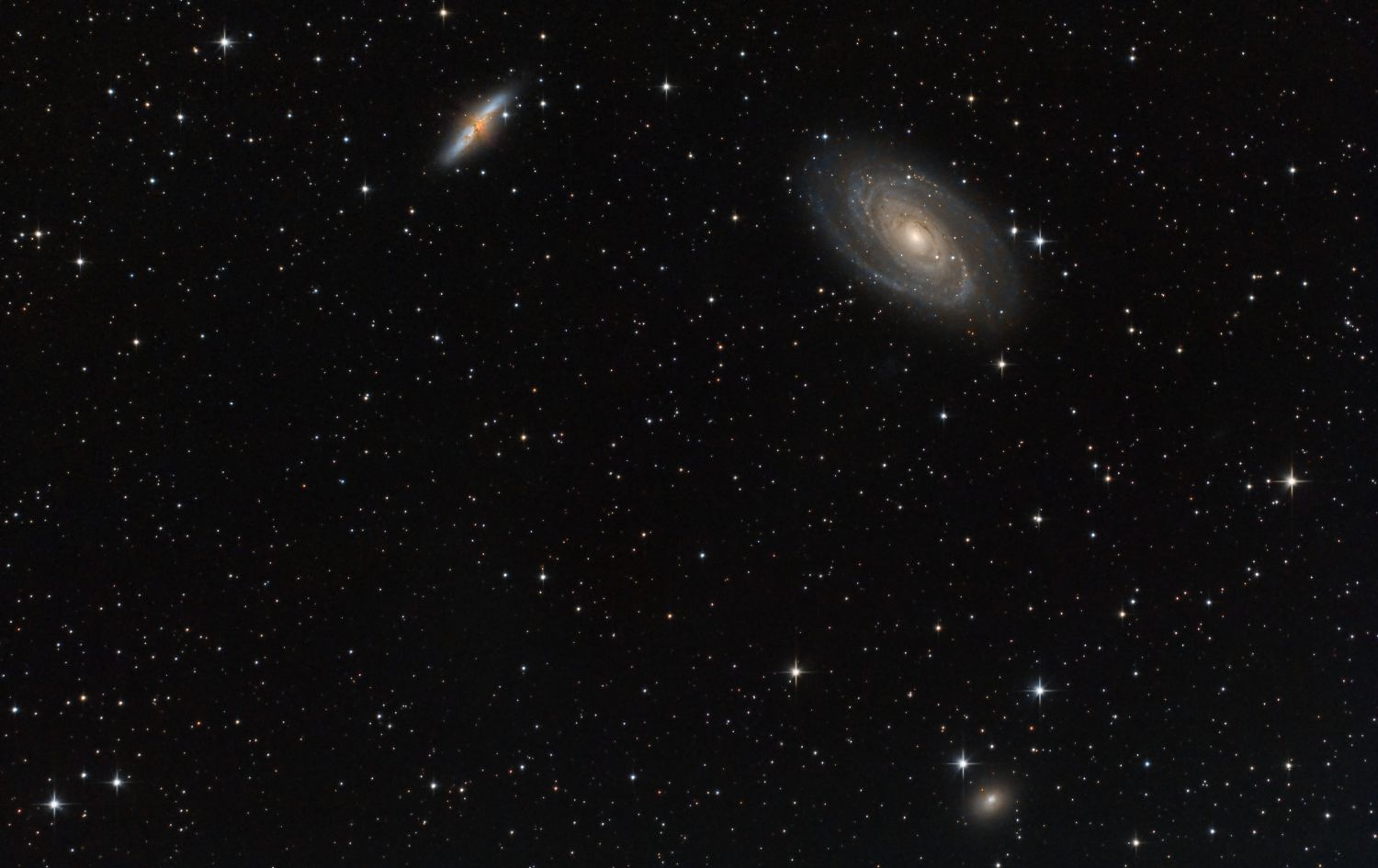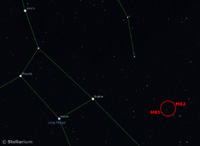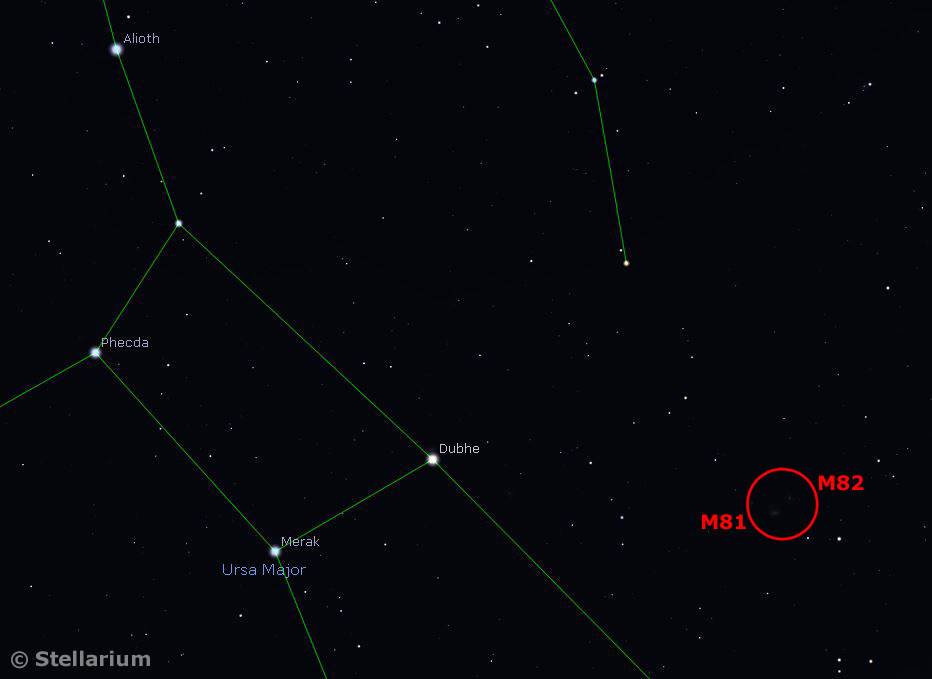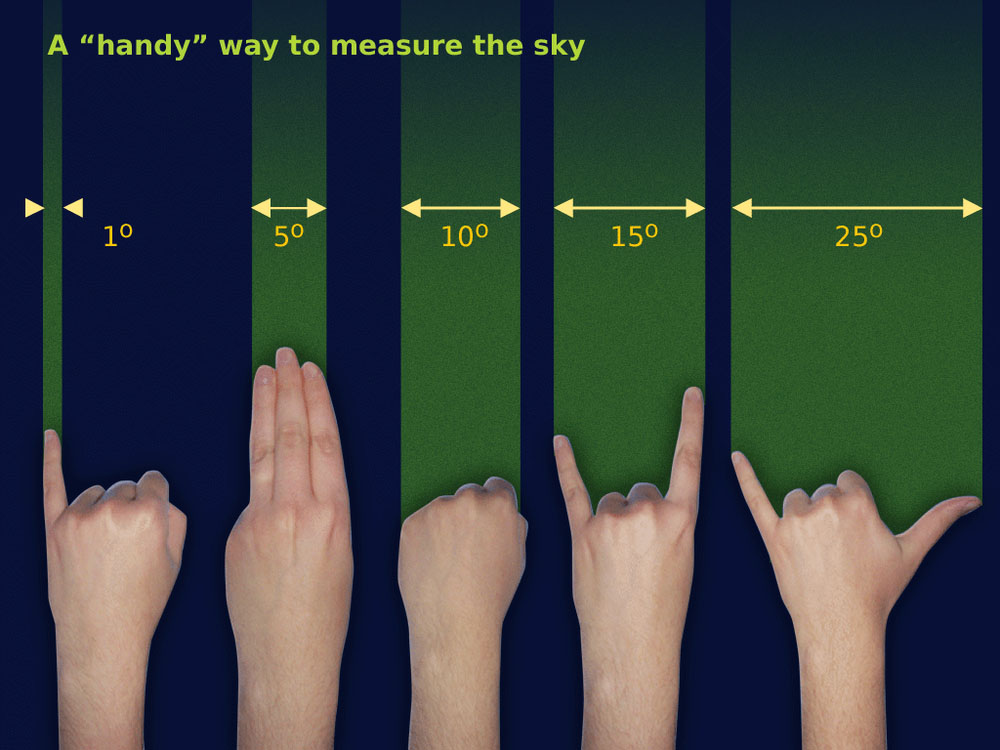Information...
M81 - Bode's Galaxy, is a grand design spiral Galaxy about 12 million light-years from Earth and is named after the German astronomer Johann Elert Bode, who discovered it in 1774. It was also the first spiral galaxy in which rotation of it's arms was detected thorugh spectroscopic analysis, when Maximilian Wolf discovered the linear rotational velocity at the edge of the galaxy to be approx. 300 km/s.
It's close neighbour, M82 - the Cigar Galaxy, gets it's name from it's edge-on appearance. It is a Seyfert 'star-burst' galaxy with it's central core being 100 times more luminous that the centre of our Milky Way. Images from Hubble identified 197 young massive clusters in it's core, each with an average mass of 200,000 times that of our Sun. The high rate of star formation is due to gravitational tidal action from M81.
Also within the M81 Group is NGC3077 a small disrupted elliptical galaxy.
For more info. see the Wikipedia entries for M81, M82 and NGC3077.
James Clark's full resolution images & more info can be found on his IFN and M81/M82 Astrobin pages.
